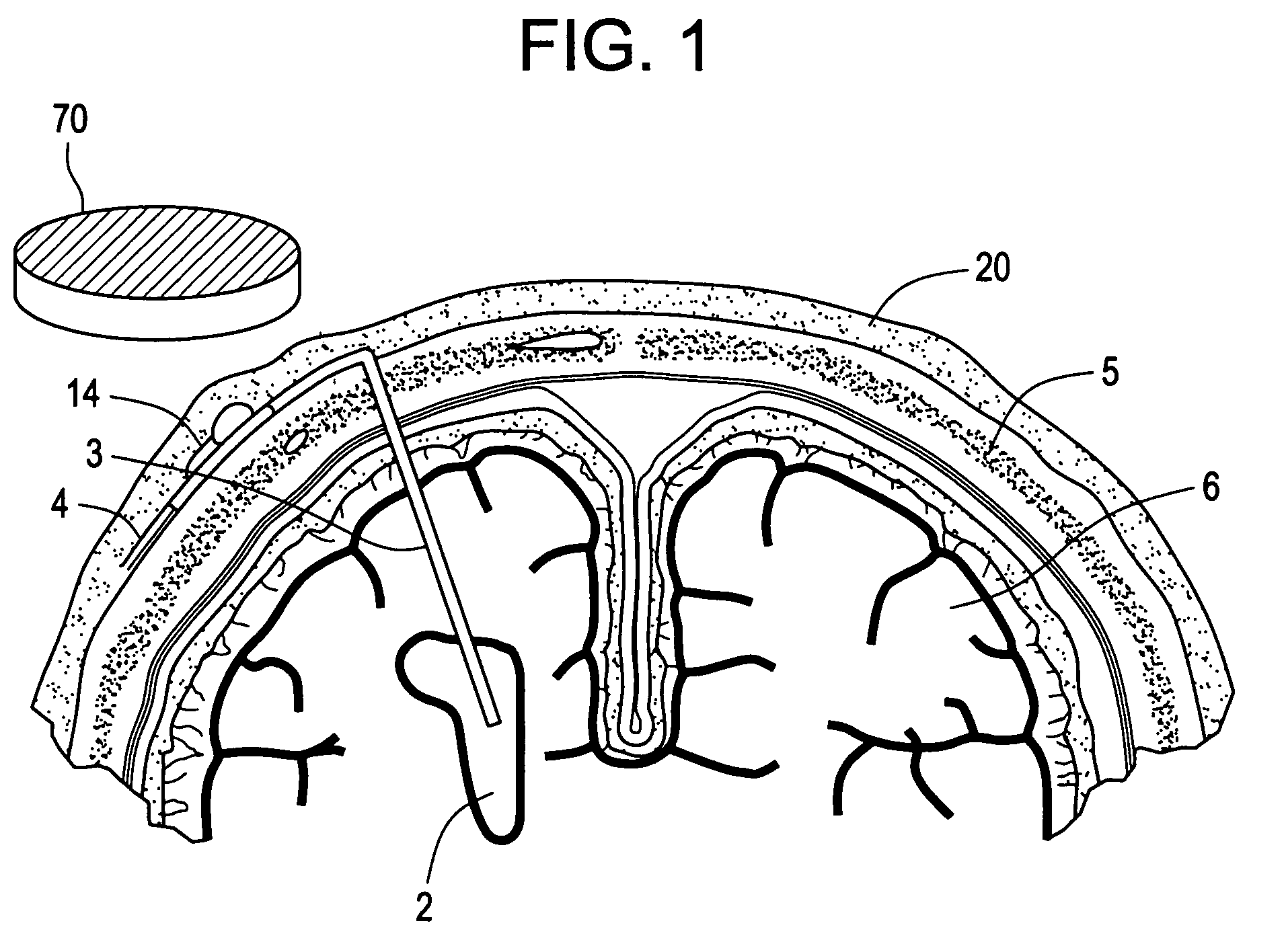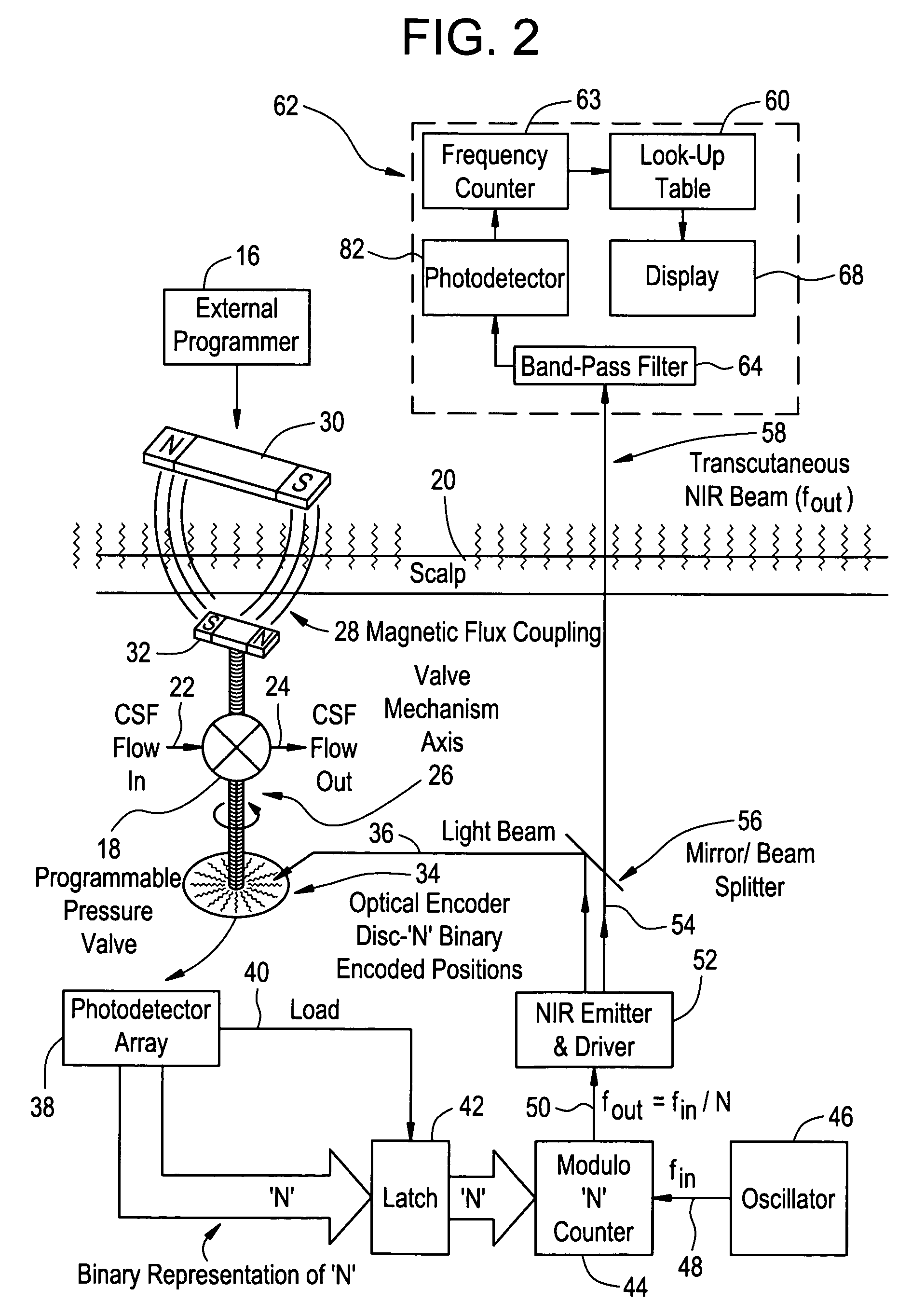Transcutaneous telemetry of cerebrospinal fluid shunt programmable-valve pressure using near-infrared (NIR) light
a cerebrospinal fluid and transcutaneous telemetry technology, applied in the direction of valve operation/release device, diagnostic recording/measuring, wound drain, etc., can solve the problems of unsuitable use of x-ray to determine valve pressure, unsuitable use of x-ray, and inconvenient us
- Summary
- Abstract
- Description
- Claims
- Application Information
AI Technical Summary
Benefits of technology
Problems solved by technology
Method used
Image
Examples
Embodiment Construction
[0017]The system of the present invention as shown in the simplified cross-sectional view of FIG. 1 includes an extracorporeal sensor head 70 which provides an interface to a human operator and which telemeters with an implanted component 14. The latter is integrated into the shunt-valve housing, detects the actual valve setting, and telemeters these data to the extracorporeal sensor head 70. The implanted component 14 may derive its power via inductive coupling from the extracorporeal sensor head 70.
[0018]In a typical in vivo implementation a hollow ventricular catheter 3 is placed surgically into a cerebrospinal fluid (CSF) filled ventricle 2 of the brain 6 of the patient. The CSF is communicated via the ventricular catheter 3 to the implanted component 14 where its flow is controlled by controllable pressure valve 18 (FIG. 2). The normally closed valve opening pressure setting is controlled by an attached cam which is mounted on a rotatable axis. An optical disc on that axis acts...
PUM
 Login to View More
Login to View More Abstract
Description
Claims
Application Information
 Login to View More
Login to View More - R&D
- Intellectual Property
- Life Sciences
- Materials
- Tech Scout
- Unparalleled Data Quality
- Higher Quality Content
- 60% Fewer Hallucinations
Browse by: Latest US Patents, China's latest patents, Technical Efficacy Thesaurus, Application Domain, Technology Topic, Popular Technical Reports.
© 2025 PatSnap. All rights reserved.Legal|Privacy policy|Modern Slavery Act Transparency Statement|Sitemap|About US| Contact US: help@patsnap.com



